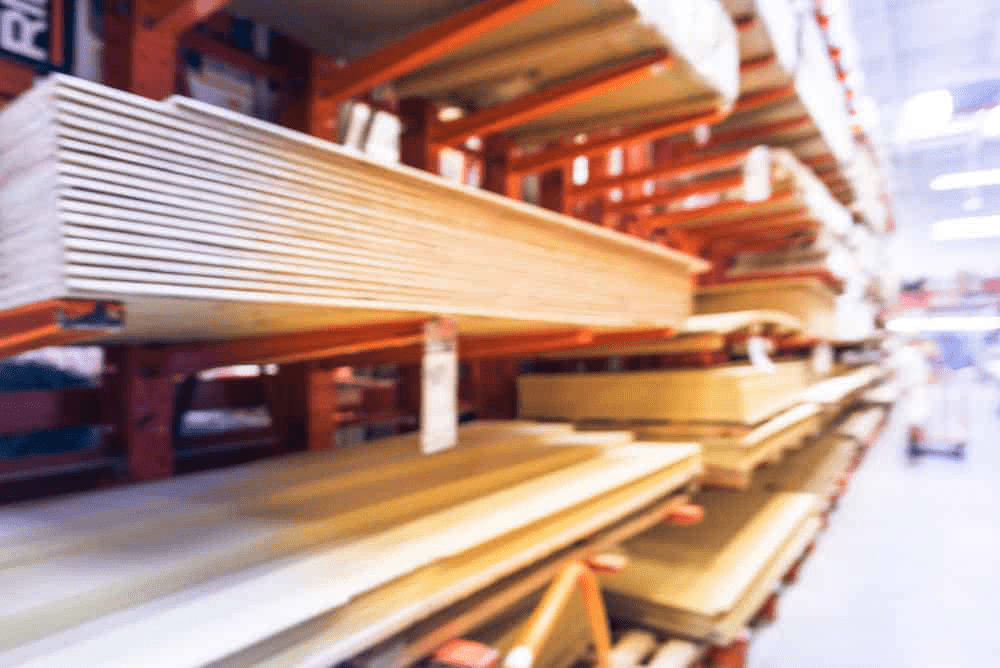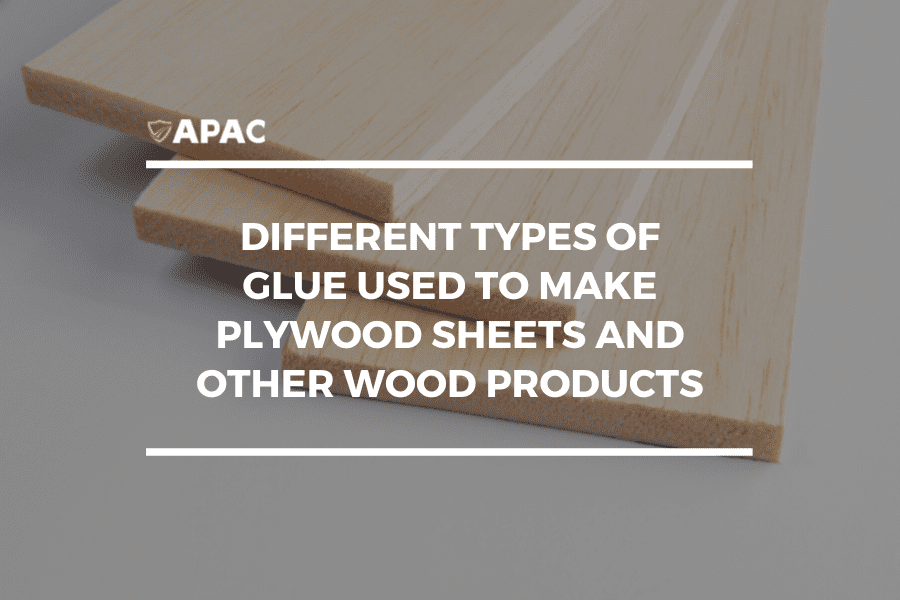introduction
When it comes to wood products and plywood sheet production, you can use different types of glue. The three main types of glue are urea-formaldehyde glue, melamine glue, and phenolic glue. You must consider why you should not use the same glue for every wood product.
You need to ensure that the properties of your adhesives or glue match the properties of wood. This can ensure strong bonding between the wood and glue. Not all wood products have the same properties, which is the case with glue. One type of glue can be the right choice for a certain plywood type and can be simultaneously unsuitable for other wood products.
The three main types of glue are explained below:

1. Phenolic Glue
Phenolic glue is produced by combining formaldehyde and phenol. It is a synthetic polymer. Due to its ability to set hardness and rigidity, it has excellent moisture resistance and can withstand high temperatures.

Phenolic glue is categorized into Novolac and Resol Resins. The first one needs a curing agent, while the second one doesn’t need a curing agent. To cure phenolic glue, you need to have pressure and heat.
Some applications, advantages, and disadvantages of phenolic glue are listed below:
Advantages
- Phenolic glue can withstand chemical resistance, electrical resistance, dimensional stability, hardness, and heat.
- It can withstand surprisingly higher temperatures.
- Moisture resistant
- High heat tolerance
Disadvantages
- Phenolic glue can irritate your skin if you use it in a closed space. It is necessary to have a ventilation space. The irritation to the skin is caused due to formaldehyde present in the glue.
- Phenolic resins are durable but strongly brittle at the same time. Therefore, you need to use them by combining fillers.
Applications
- Phenolic glue is utilized as a bonding agent and binder for hardboard, plywood sheets, particleboard, and oriented strain boards.
- Phenolic glue is considered widely used for construction work due to its high heat tolerance. In construction work, you can use it for beams, marine plywood, and panels.
- This glue can be utilized for electrical components as insulation. At this point, it needs to be used in combination with fabric and paper.
- Most manufacturers use phenolic glue for waterproofing, but it is not as effective as urea-formaldehyde glue.
- It is also used for knife handles due to its strong grip.

2. Melamine Glue
When looking for the right glue for decorative purposes, melamine glue can be your right choice. Melamine glue is produced by combining melamine and formaldehyde. This glue is also used for plywood making, but most consumers prefer it in decorative applications. People also use melamine glue for plywood, MDF, and particleboard wood.
You can use melamine glue for objects that are kept at temperatures ranging from -30 degrees to 120 degrees Celsius. It is important to note that melamine glue can be dangerous if someone tries to consume it. It is a versatile thermosetting aminoplast with high durability and hardness. Melamine resin is used for plywood due to its strong ability to withstand fire and heat.

Advantages
- Melamine glue can give you the dual benefits of flawlessness and strength without risking any damage to your plywood.
- Fast setting with excellent strength.
- Fast initial tack.
- Long open time.
- Dries clear.
- Thicker formulation.
- More effective when used for precise assemblies.
- It is colored easily, unlike phenolic glue.
- The electrical properties of this glue aren’t affected by high humidity conditions.
- Self-extinguishing.
- It has high resistance to solvents.
- Super-plasticizing.
- Scratch resistance.
Disadvantages
- It is inferior to phenolic glue in high temperatures and dry conditions.
- It costs higher than urea formaldehyde and phenolic glue.
- It possesses a very limited resistance to concentrated alkalies and acids.
Applications
- Plywood binding.
- Decoration purposes.
- Particleboard binding.
- Ideal for insulation purposes in buildings.
- Flame-retardant applications.
- Resin lamination purposes.
- The interesting thing about melamine glue is that it can be turned into foam.
- Insulation of ductwork and pipes.
- It is also used for soundproofing purposes in studios.
3. Urea-Formaldehyde Glue
When dealing with hardwood plywood production, urea-formaldehyde is the most commonly used glue. Urea-formaldehyde glue is manufactured through the chemical reaction of urea and formaldehyde. It is also known as plastic resin glue. It is the most preferred glue for making MDF, plywood, and many other wood products. It is also used for molding products. Urea-formaldehyde is used for wood bonding and making different forms. Particleboard and interior grade plywood are the two most common applications of urea-formaldehyde.
According to most consumers and wood experts, urea-formaldehyde glue is one of the best types of glue. If you see an object containing a furniture grade label, it means that urea-formaldehyde is used.
If you want a significant glue for wood boards and pressed wood, you should consider urea-formaldehyde glue. The best part about urea-formaldehyde is that it can not be thermoformed or melted.

Advantages
- Higher rigidity and hardness.
- Decreases the spring back in laminations.
- Excellent opening time of 20 to 30 minutes.
- It can be washed away with water.
- Moisture-resistant type II
- Blends well with wood products due to its color.
- Highly reliable for industrial projects as well as small projects.
- Affordable prices
- Simple to use.
Disadvantages
- It will melt under hot temperatures.
- It should be used in a well-ventilated environment. Otherwise, it can be toxic.
- It has a one-year shelf life, but you should store it in a dry environment to maintain its quality.
Applications
- Particleboard.
- Plywood
- Wood panels.
- Bending laminations.
- Airplanes
- Construction of boats
Conclusion
Since you have read about different types of glue, it must be easy for you to choose the right glue for your plywood formwork, h20 beams, and LVL planks. However, you should remember that matching the properties of wood products with the chosen adhesives is necessary. Make sure you choose a high-quality wood product, even if you already have a high-quality resin.
Are you looking for a reliable manufacturer of beams and planks in China?
Look no further. Contact us now.





